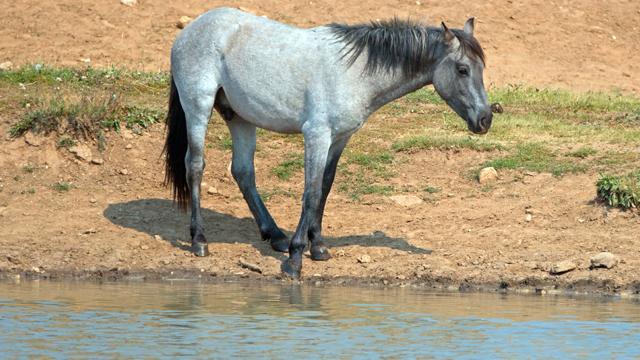Keeping an Open Mind Pays Dividends
— S. Scot Litke, Hon. D. GE
How’s the Water?
“You can lead a horse to water but you can’t make him drink.”
This 12th Century English homily presents a classic conundrum: Why won’t the horse drink the water? Not drinking is clearly self-destructive. Refusing water seems absurd. But let’s look at the situation from the horse’s point of view. If the horse has been led to the water, it must not be the water he’s used to drinking. So the horse is not only presented with a new situation he has not encountered or evaluated before, he’s faced with having to change his tried and true method of quenching his thirst. No wonder he balks. Still, like all living things, the horse must drink. Refusing makes no sense. So why would a horse make such a bad decision?
In structural engineering, the situation is directly analogous to what happens when someone introduces a better mousetrap. Even if a new product performs better, costs less, is more durable, more available and more easily installed than the product engineers are used to specifying, some engineers, like recalcitrant horses, will refuse to drink new water. To help us better understand this conundrum, let’s once again look at the situation from the horse’s point of view.
There are numerous factors that pull us toward bad decisions:
Fatigue – It’s long been known that fatigue negatively affects decision-making. Conventional wisdom advises us to never make major decisions when we are exhausted. This wisdom is supported by studies that have shown that we make higher quality decisions in the mornings than at any other time of day.
Hunger – When we are hungry, our bodies produce the hormone ghrelin, which increases appetite and has a demonstrably negative effect on decision-making and impulse control. That’s why people say you should never go grocery shopping when you’re hungry.
Strong Emotions – Strong emotions have a strong impact on decision-making. Excitement can cause us overly optimistic. Anxiety can cause decisions to be made impulsively. Depression can make us indifferent to our decisions. Anger or embarrassment can cause us to take long shots.
Inertia – Inertia is what makes it hard to make a change. It also makes it easier to fall back on thought patterns we have used in the past than to try something new.
Contrariness – Some of us are just natural born rebels and will resist whatever someone else wants us to do. These contrarians would rather keep their views to themselves than to appear easily swayed.
Bias – Bias is at work if information that supports one decision is seen as more important than information that supports another decision. Seeing your own bias is difficult but well worth the effort.
Entrapment – When we are heavily invested in a course of action, like specifying the same product for many years, we will increase our commitment to that course of action in order to justify taking it, thus entrapping ourselves in a closed loop.
Experiential Blinders – When you’ve “always done it this way,” “this” becomes “the way you do it” and you become unable to look beyond past experience when considering something new.
Role Fulfillment – Sometimes we will make decisions based on what we think others expect of someone in our positions. This is usually the safest, most traditional decision.
All too often, decision-making is not the rational, dispassionate, fact-based process we would like it to be. At one time or another, each of us has had our decisions influenced by one or more physical, emotional or psychological factors. It’s a rare horse that’s never been led to water and refused to drink. So next time you decide whether or not to specify a new product, take a look at your state of mind before you decide to reject it. If it performs better, costs less, is more durable, more available or more easily installed, it just may be the better mousetrap you’ve always wanted.
501 E. Main St. | Arlington, TX 76010
o: 817-277-3738 | f: 817-275-2335
sales@pieresearch.com
This article was produced under the auspices of Pieresearch, manufacturer of quality concrete accessories, exclusively for the benefit of the structural and geotechnical engineering, architectural and construction communities and is copyrighted by Pieresearch 2019.
